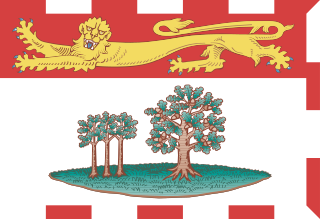
Prince Edward Island is one of the thirteen provinces and territories of Canada. It is the smallest province in terms of land area and population, but the most densely populated. The island has several nicknames: "Garden of the Gulf", "Birthplace of Confederation" and "Cradle of Confederation". Its capital and largest city is Charlottetown. It is one of the three Maritime provinces and one of the four Atlantic provinces.

The University of Prince Edward Island (UPEI) is a public university in Charlottetown, Prince Edward Island, Canada, and the only university in the province. Founded in 1969, the enabling legislation is the University Act, R.S.P.E.I 2000.
Norman MacLeod, known in Gaelic as Caraid nan Gàidheal, was a Church of Scotland minister, poet, and writer. He was Chaplain to Queen Victoria and Dean of the Chapel Royal in Scotland.
Prince Edward Island is a province of Canada consisting of the island of the same name, and several much smaller islands. Prince Edward Island is one of the three Maritime Provinces and is the smallest province in both land area and population.

Cavendish is an unincorporated rural community in the township of Lot 23, Queens County, Prince Edward Island, Canada.

Canadian Gaelic or Cape Breton Gaelic, often known in Canadian English simply as Gaelic, is a collective term for the dialects of Scottish Gaelic spoken in Atlantic Canada.
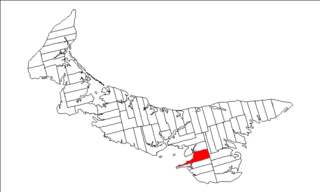
Lot 57 is a township in Queens County, Prince Edward Island, Canada. It is part of St. John's Parish. Lot 57 was awarded to merchant Samuel Smith and Captain James Smith in the 1767 land lottery. By 1803, it had been sold to the Thomas Douglas, 5th Earl of Selkirk.
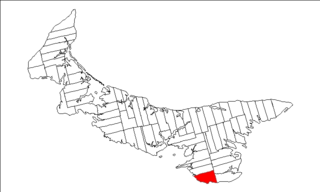
Lot 62 is a township in Queens County, Prince Edward Island, part of St. John's Parish. Lot 62 was awarded to Richard Spry, Esquire in the 1767 Land Lottery, and came to be settled through the efforts of Thomas Douglas, The 5th Earl of Selkirk in 1803. Richard Spry, Esquire, was then Commodore, Commander-in-Chief, Mediterranean Fleet at Gibraltar 1766–1769. Becoming the proprietor, he would be familiar with then the Island of St. John, having first come out to North America in 1754, with the English naval blockade of Ile Royal and the Fortress of Louisbourg in 1756, and then serving off Quebec and in the St. Lawrence into 1759. In 1762, he returned as Commander-in-Chief, North America, quartered in Halifax.
Breadalbane is a municipality that holds community status in Prince Edward Island, Canada. Located in Queens County, Prince Edward Island, its population as of 2021 is 170.
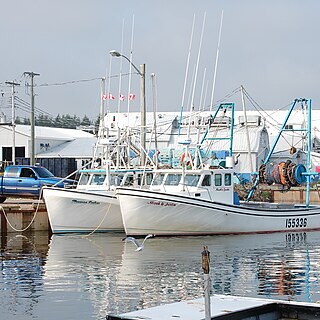
Murray Harbour is a community that holds rural municipality status in Prince Edward Island, Canada. It is located in southeastern Kings County.

Wood Islands is a rural farming and fishing community located in southeastern Queens County, Prince Edward Island on the Northumberland Strait. It takes its name from several small forested islands, then located several hundred metres offshore in the Northumberland Strait. The community of Wood Islands falls within the larger PEI Township of Lot 62, which had a population in 2011 of 470 residents, a 13% decrease from the 2006 census count of 540. While the named islands are located on maps by Jacques-Nicolas Bellin: Karte Bellin, 1744: 'I a Bova' and Louis Franquet: Cartes Franquet, 1751: 'Isle a Bois', it was Samuel Johannes Holland who correctly surveyed and depicted the islands, about their basin. The 'European' settlement of Wood Islands began in 1803, but saw its most noted arrivals in 1807 with the arrival, after wintering in Pinette, of a large party of Scottish settlers from the Spencer.

Angus Bernard MacEachern was a Scottish Bishop in the Roman Catholic Church who rose to become the first Bishop of the newly formed Diocese of Charlottetown following its separation from the Archdiocese of Quebec on August 11, 1829.

Scottish Canadians are people of Scottish descent or heritage living in Canada. As the third-largest ethnic group in Canada and amongst the first Europeans to settle in the country, Scottish people have made a large impact on Canadian culture since colonial times. According to the 2016 Census of Canada, the number of Canadians claiming full or partial Scottish descent is 4,799,010, or 13.93% of the nation's total population. However, some demographers have estimated that the number of Scottish Canadians could be up to 25% of the Canadian population. Prince Edward Island has the highest population of Scottish descendants at 41%.
Barbecue is an unincorporated community located in the Barbecue Township of Harnett County, North Carolina, United States. It is a part of the Dunn Micropolitan Area, which is also a part of the greater Raleigh–Durham–Cary Combined Statistical Area (CSA) as defined by the United States Census Bureau.
Angus Macaulay was a schoolmaster, physician and political figure in Prince Edward Island.

Charlottetown is the capital and largest city of the Canadian province of Prince Edward Island, and the county seat of Queens County. Named after Queen Charlotte, Charlottetown was an unincorporated town until it was incorporated as a city in 1855.
Scottish Gaelic literature refers to literature composed in the Scottish Gaelic language, a member of the Goidelic branch of Celtic languages, along with Irish and Manx.
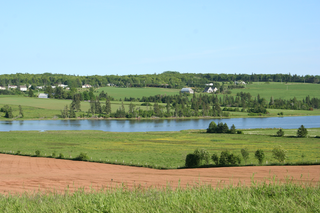
Clyde River is a rural municipality in Prince Edward Island, Canada. Clyde River is located in Queens County in the central part of Prince Edward Island and just 15 minutes away from Charlottetown. The original community name was Dog River. It was named after the River Clyde in Scotland. Heritage is predominantly Scottish and English.
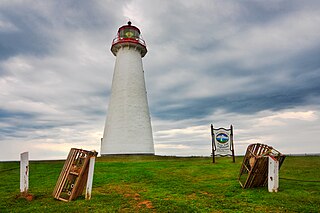
The Point Prim Lighthouse is a lighthouse on Prince Edward Island, Canada. It is located at the end of Point Prim Road, also known as Route 209.
Lynwood MacPherson is a Canadian politician, farmer and businessman. He represented 4th Queens in the Legislative Assembly of Prince Edward Island from 1986 to 1996 as a Liberal.

















